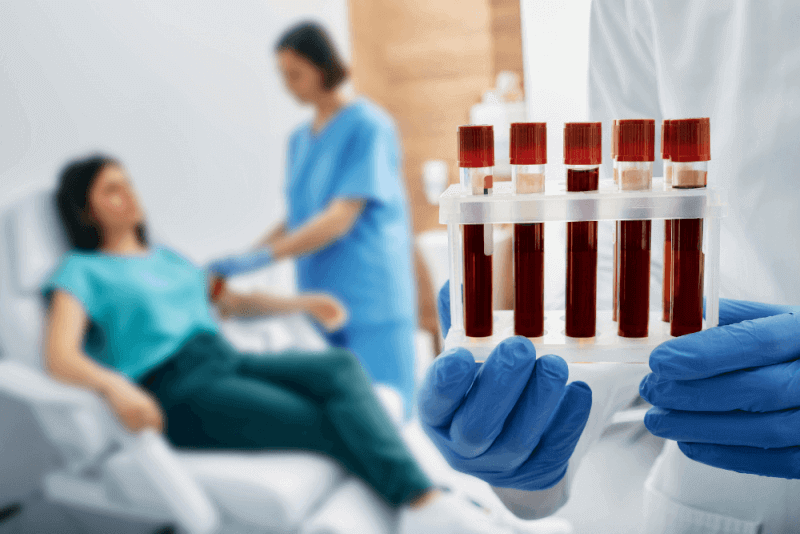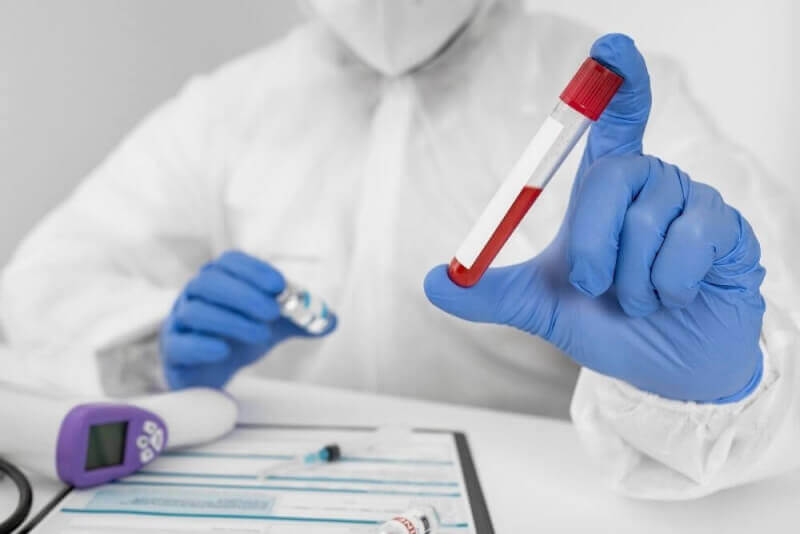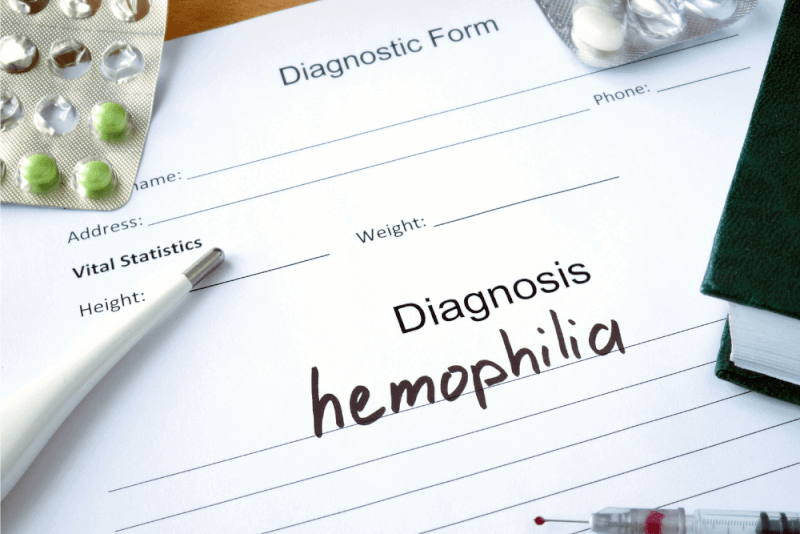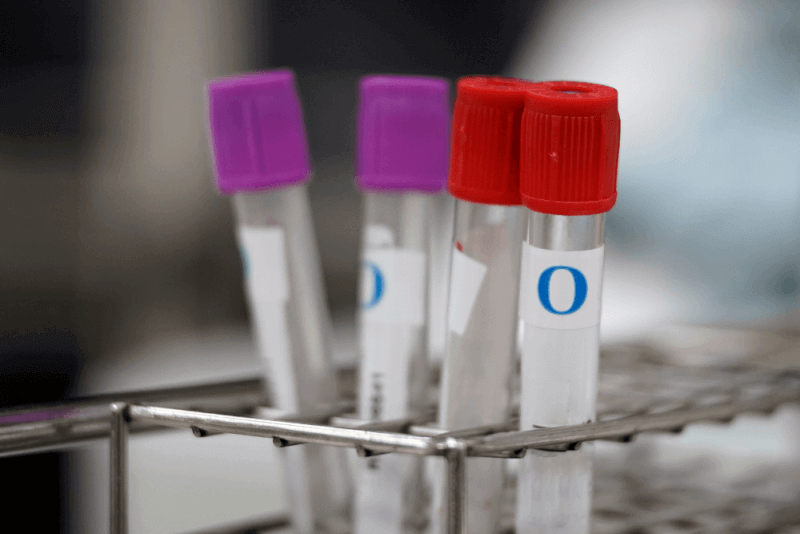What is a Hemogram Test?
Also known as a complete blood count, the hemogram test is abbreviated as CBC. In addition to checking general health, it is used to detect various health conditions such as anemia, infections, and leukemia. The following parameters are measured in the hemogram test.
- Red blood cells that carry oxygen
- Platelets that help in blood clotting
- White blood cells that fight infection
- The amount of red blood cells in the blood
- Hematocrit
- Hemoglobin, a protein in red blood cells that carries oxygen
The hemogram test can show abnormal increases or decreases in cell counts. Detecting these changes is considered a sign of a medical condition that may require further testing.
How is a Hemogram Test Performed?
To perform a hemogram test, a member of the healthcare team, usually a nurse, inserts a needle into a vein in the inside of the elbow to collect a blood sample. The sample is then sent to the lab for necessary tests. After the test, normal activities can be resumed immediately.
Is the Hemogram Test Done on an Empty Stomach?
If the test is only for a complete blood count, eating and drinking can continue as usual before the test. However, if the blood sample is to be used for other tests, it may be necessary to refrain from eating and drinking for certain periods beforehand. The most accurate information on this will be provided by the healthcare professional.
Hemogram Test During Pregnancy
The hemogram test is applied at different stages of pregnancy. This test provides general information about the health status of both the mother and the baby. With the hemogram test, it is possible to check parameters such as blood cell count, iron levels, and signs of infection.
A complete blood count during pregnancy is one of the most important tests used to monitor the changes occurring in the body. Therefore, it is necessary to perform the hemogram test at regular intervals throughout the pregnancy, especially at the beginning, middle, and end of the pregnancy. However, the timing of the test may vary depending on whether the pregnancy is considered high-risk. If there are complications during pregnancy or if the person had issues in previous pregnancies, it may be necessary to perform the hemogram test more frequently.
Normal Hemogram Values During Pregnancy
The parameters during pregnancy differ from those of the normal female population. The normal range values are as follows:
- Red blood cell count should be between 4.2 to 5.4 million/microliter
- White blood cell count should be between 4.5 to 110 thousand/microliter
- Platelet count should be between 150 to 450 thousand/microliter
- Hemoglobin levels should be between 11.5 to 15.5 g/dl
If values are outside these ranges, the specialist may request additional tests or initiate some treatment options. In cases of out-of-range values, the following procedures are generally followed:
- If hemoglobin levels are low, iron supplements may be recommended.
- If white blood cell levels are high, further tests may be required to identify the presence of an infection.
- In cases of low platelet counts, the patient may be referred to a hematologist to evaluate the risk of bleeding.
What is Mono Elevation in a Hemogram Test?
One of the values that can be detected during a hemogram test is monocyte elevation. If the value is higher than 10%, it is referred to as monocyte elevation. Monocyte elevation is considered a sign of infection or inflammation in the body. The factors that can cause an increase in monocyte levels include:
- Bacterial, viral, or parasitic infections in the body can cause mono levels to rise. Monocytes are part of the immune system that fights pathogens and helps clear inflamed tissues.
- Damage to organs or tissues can also lead to mono elevation. Monocytes are involved in the body's repair process, which can result in elevated levels.
- Bone marrow disorders are also among the factors that cause mono elevation.
- Lastly, autoimmune diseases can lead to mono elevation as the immune system attacks healthy tissues.
What is Monocyte Decrease in a Hemogram Test?
It is also possible to have low monocyte values in hemogram test results. For it to be considered monocyte decrease, the value must be below 2%. The factors that can cause monocyte levels to decrease include:
- Problems in the bone marrow, where blood cells are produced, cause fewer monocytes to be produced than normal.
- Health conditions that affect the immune system can lead to monocyte deficiency.
- Procedures used in cancer treatment can affect bone marrow cells, leading to monocyte decrease.
- Certain infections can cause monocyte levels to decrease.
- Chronic inflammation is also among the factors that lead to fewer monocytes being produced than normal.
Low monocyte levels can weaken a person's immune system. This makes the body more vulnerable to infections. Decreased monocyte levels generally cause weakness and fatigue in the body.
Why is a Hemogram Test Performed?
The hemogram is a common blood test performed for various reasons. The reasons for conducting a complete blood count include:
- It is part of a medical examination to check general health and to screen for conditions such as anemia and leukemia.
- The hemogram test is also used to help determine the causes of symptoms such as weakness, fatigue, and fever. Additionally, it can help identify the cause of swelling, pain, bruising, or bleeding.
The hemogram test helps monitor conditions that affect blood cell counts.
- Hemogram tests are also used to monitor medical treatments, including treatments that affect blood cell counts, and to track treatments involving radiation or medication.
Hemogram Test Results
Hemogram test results are measured as cells per liter or grams per deciliter. The scale used may vary depending on the laboratory. Expected normal hemogram test results for adults are as follows:
Red Blood Cell Count
The normal range for red blood cell count is between 4.35 trillion and 5.65 trillion cells per liter for men. For women, this range is between 3.92 trillion and 5.13 trillion cells per liter.
Hemoglobin
For men, hemoglobin levels are expected to be between 13.2 and 16.6 g/dl. For women, the normal range is between 11.6 and 15 g/dl.
Hematocrit
Hematocrit values are expected to be between 38.3% and 48.6% for men, and between 35.5% and 44.9% for women.
White Blood Cell Count
Both men and women share the same normal range for white blood cell count, which is between 3.4 billion and 9.6 billion cells per liter.
Platelet Count
The normal platelet count for men is between 135 billion and 137 billion per liter, while for women, the range is between 157 billion and 371 billion per liter.
A diagnosis cannot be made solely based on values outside of this range. The results outside the expected range may or may not need further monitoring. Specialist doctors will provide their opinion and may request additional tests if necessary.
What Do the Results Indicate?
The results of a hemoglobin test, where values fall above or below typical ranges, may indicate a problem. The factors indicated by these values are as follows:
Red Blood Cell Count, Hemoglobin, and Hematocrit
The results of these three are related, as each measures an aspect of red blood cells. Lower-than-normal values in all three areas are considered a sign of anemia. Higher-than-normal values are referred to as erythrocytosis. Elevated values may indicate medical conditions such as blood cancer or heart disease.
White Blood Cell Count
Lower-than-normal white blood cell counts are known as leukopenia. This can be caused by autoimmune disorders, bone marrow problems, or cancer, which affect white blood cells. Some medications can also cause a drop in white blood cell count.
Having a higher-than-normal white blood cell count is often a sign of infection or inflammation. It can also indicate an immune system disorder or bone marrow disease. Additionally, it can be a reaction to medication or intense exercise.
Platelet Count
A lower-than-normal platelet count is called thrombocytopenia. Higher-than-normal values are referred to as thrombocytosis. This can be a sign of a medical condition or a side effect of medication. Further tests are needed to determine the cause of platelet counts outside the typical range.







